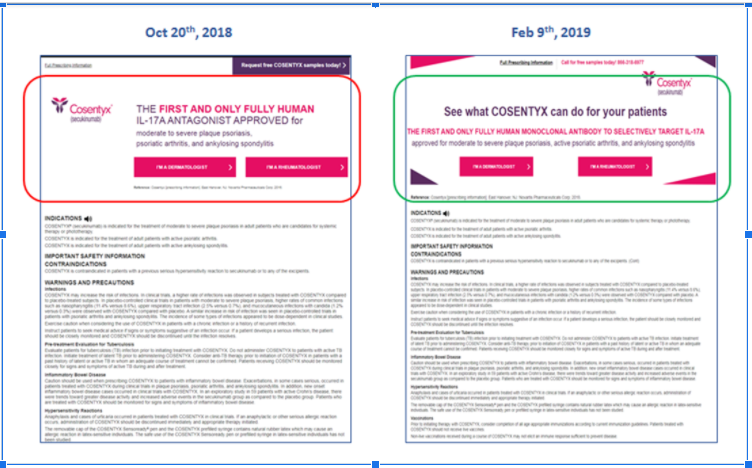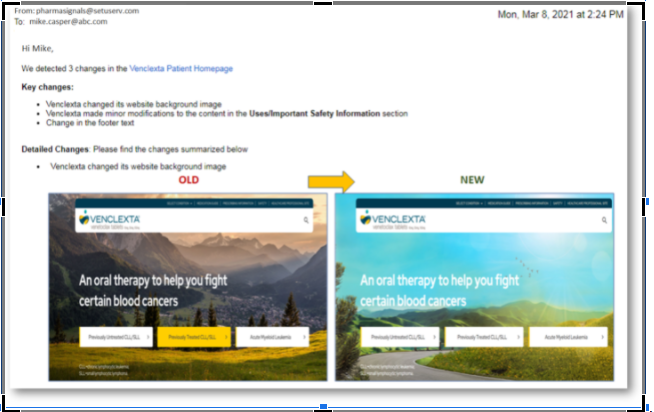Pharma companies maintain patient and physician websites for each of their drugs to provide information such as efficacy and safety of their drugs. These web pages provide rich insight into how they are positioning and messaging their drugs, and how it is changing over time. Pharma companies can monitor websites of their competitors to glean competitive intelligence on key messaging changes.
However, a pharma drug typically has half a dozen key competitors to track and analyze. Each competitor drug has a patient and physician website, with each website containing 10 to 20 pages to monitor. This implies that a drug company needs to monitor 120 to 240 webpages on a daily basis. The changes identified from daily monitoring are not always relevant to messaging. Hence, valuable changes need to be separated from noisy changes. Performing these activities on a daily basis and identifying key messaging changes can be tedious, resource-consuming and prone to errors. This blog post discusses how automated website monitoring can overcome these challenges and produce valuable competitive intelligence.
Automating tracking of changes in competitor websites
Web crawlers can collect content from webpages on a daily basis. However, the crawlers need to be customized to overcome several nuances such as scraping dynamic content, images & data from pop-ups. Additionally, the scrapers need to overcome blockers and navigate through page hierarchy. Such customizations ensure reliable and comprehensive data collection. Once the data is collected on a daily basis, text mining & pixel mining programs can be configured to identify the daily changes and quantify the percentage of data that changed on the website.
Parsing out key messaging changes
Webpage changes can range from not-so-important changes such as footnotes to very valuable changes such as key messaging changes. A well trained Natural Language Processing (NLP) classifier can parse out the valuable changes from the noisy changes. Following graphic illustrates an output –

Distributing the detected changes to key stakeholders
Once the key changes are parsed, they can be sent to key stakeholders as daily alerts so that they take timely decisions related to their own brands. Following graphic illustrates an example email that can be sent to the key stakeholders.

.SetuServ’s AI-Powered PharmaSignals platform uses the above mentioned technologies to monitor competitive websites for valuable content changes. It monitors the competition through one central interface and notifies the concerned team about new insights, amendments, and additions via e-mail.

